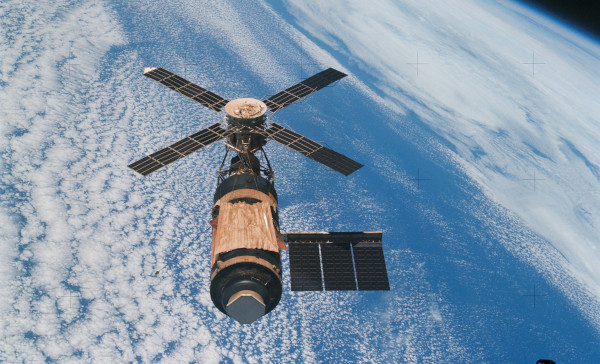
I discovered the Space Rocket History Podcast a while back and listened to all the episodes on the Apollo program. I’m now listening to the episodes on Skylab as they come out. I came for Apollo; I stayed for Skylab. I would not have sought out the episodes on Skylab, and that would have been a shame.
Skylab is an underrated program. I wonder how many in my children’s generation even know what Skylab was. Those who do probably think of it as brief interlude between Apollo and the Space Shuttles, or more cynically, a way to keep aerospace contractors in business after the Apollo program ended. But NASA learned a lot during the Skylab program.
The numbering of the Skylab missions is a little confusing. Skylab 1 was the mission to put the lab itself into orbit. The first manned mission to the lab was Skylab 2, the second manned mission was Skylab 3, and the final manned mission was Skylab 4.
Skylab 2 was the most dramatic Skylab mission, just as Apollo 13 was the most dramatic Apollo mission, because in both cases there were major problems to be solved. The missions were literally dramatic in that they had the story arc of a drama.
Because Skylab 2 was primarily concerned with repairs, Skylab 3 was the first mission entirely focused on planned mission objectives. The productivity of the crew started slow and steadily accelerated over the course of the mission. I recommend the Space Rocket History Podcast for the details.
NASA initially scheduled the crew of Skylab 4 to work at the pace Skylab 3 achieved by the end of that mission. This lead to tension, mistakes, and falling behind schedule. Ground control and the astronauts worked through their mutual frustrations and came up with better ways of working together. The crew then exceeded the ground crew’s initial expectations. One change was to distinguish synchronous and asynchronous tasks, letting the crew decide when to do tasks that did not have to be done at a particular point in orbit. Another change was to allow the crew more rest: the crew accomplished more by working less (and making fewer mistakes).
This would make a good business school case study. In fact there was a Harvard Business School case study about Skylab 4, but it was based on false information and presumably drew the wrong lessons from the mission. The case study said the crew went on strike for a day, rebelling against ground control. The truth was that ground control lost radio contact with Skylab for one orbit, 90 minutes, due to an error.

Regarding the false ‘strike’, the orbit, and the unreliability of the news….
There’s a great pun lurking somewhere in here, around “A lie is halfway round the world before the truth has got its boots on” — Skylab being a special case where the 45 minutes to, in truth, put on an EVA suit is, indeed, ‘halfway around the world’.